


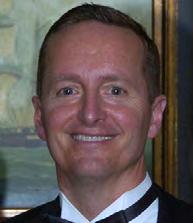
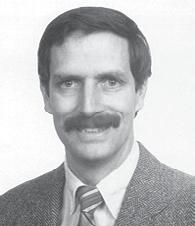
Prabha Krishnan Heads Slate of Officers
Being Installed at Annual House Meeting
The New York State Dental Association will welcome its 2024-2025 officers when the Association hosts the annual meeting of its House of Delegates May 31-June 2 at Turning Stone Resort and Casino in Verona. Slated to be installed at the meeting are President Prabha Krishnan, President-Elect Maurice Edwards, Vice President Amarilis Jacobo, Secretary-Treasurer Paul Leary and Speaker of the House William Karp.
Prabha Krishnan, D.D.S., a periodontist in private practice in Forest Hills, is a past president of Queens County Dental Society, former chair of the NYSDA Council on Governmental Affairs and immediate past chair of the ADA Council on Communications. She has served on NYSDA councils, was a member of the Empire Dental Political Action Committee and the New York State Dental Foundation. In 2015, she became the first woman to sit on the NYSDA Board of Trustees.
While working full time in her practice, Dr. Krishnan also holds the position of attending and chief of periodontics at Flushing Hospital Medical Center. And she is a member of the Indian Dental Association Board of Trustees.
Maurice Edwards
Maurice Edwards, D.M.D., an oral and maxillofacial surgeon who practices in New York City, has been active at all three levels of organized dentistry, as well as in the American and New York State societies of oral and maxillofacial surgeons and the New York Society of Forensic Dentistry. He is a past president of the New York County Dental Society and former chair of the NYSDA Council on Membership and Communications. A graduate of the ADA Institute for Diversity in Leadership, he served for four years as a member of the ADA Council on Diversity and Inclusion.
AN OFFICIAL PUBLICATION OF THE NEW YORK STATE DENTAL ASSOCIATION NEWS MAY 2024 Volume 37 • Issue 2 Can Your Practice Withstand an Online Search? First impressions count. And the first impression potential patients get of your practice is likely formed after an online search 4 For Service Above and Beyond NYSDA prepares to present its highest honors to two exceptional members, Scott Firestone and Frank Barnashuk 8 Do Your Collections Measure Up? What if you were to compare your credit card collections with those of your professional peers? Would you find that your fees and payments aren’t keeping up? 9
CONTINUED ON PAGE 10
Prabha Krishnan
Maurice Edwards Amarilis Jacobo
Paul Leary
William Karp
Oral Surgeons Society Elects New Officers
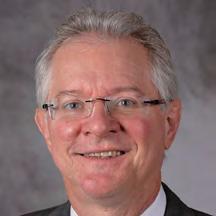
GUENTER JONKE of Stony Brook, Suffolk County, has been elected president of the New York State Society of Oral and Maxillofacial Surgeons. Dr. Jonke, who also serves on the NYSDA Board of Trustees, assumed the office following NYSSOMS’s Spring Meeting, which took place April 13-14 at Weill Cornell Medical College in New York City. He will be joined in leadership roles by Ali Payami of Yorktown Heights, president-elect; Michael Turner of New York, vice president; John Vorrasi of Rochester, secretary; and Gwendolyn Reeve of New York, treasurer.
The Spring Meeting, a collaboration between NYSSOMS and Osteo Science Foundation, featured two continuing education programs: “Defending the Specialty: Collaborative Patient Safety Principles,” which provided strategies and resources to reduce risk in the oral and maxillofacial practice and improved defensibility in oral surgery-related professional liability claims; and “Updates in Implant Dentistry for the Practicing Oral and Maxillofacial Surgeon,” presented by Tara Aghaloo, D.D.S., M.D., Ph.D.
Dr. Aghaloo, professor in oral and maxillofacial surgery at the UCLA School of Dentistry, updated attendees on achieving the most ideal and successful implant outcomes, avoiding and managing complications, and utilizing new materials and technologies. z
MAY 2024
Volume 37 • Issue 2
EDITOR
Chester J. Gary, D.D.S., J.D.
ASSOCIATE EDITOR
Stuart L. Segelnick, D.D.S., M.S.
MANAGING EDITOR
Mary Grates Stoll
ADVERTISING & SPONSORSHIP MANAGER
Jeanne DeGuire
ART DIRECTOR
Ed Stevens
NYSDA OFFICERS
Anthony M. Cuomo, President
Prabha Krishnan, President-Elect
Maurice Edwards, Vice President
Paul Leary, Secretary-Treasurer
William Karp, Speaker of the House
Gregory D. Hill, Executive Director
Editorial and advertising offices are at Suite 602, 20 Corporate Woods Boulevard, Albany, NY 12211-2370. Telephone (518) 465-0044. Fax (518) 465-3219. Email info@nysdental.org. Website www.nysdental.org.
The NYSDA News (ISSN 1531684X) is published quarterly, in February, May, October and December, by the New York State Dental Association, Suite 602, 20 Corporate Woods Boulevard, Albany, NY 12211-2370. It is available in digital form only and accessible online in the membersonly section of the NYSDA website, www.nysdental.org, under publications.

NEWS 2
NEWS
Guenter Jonke
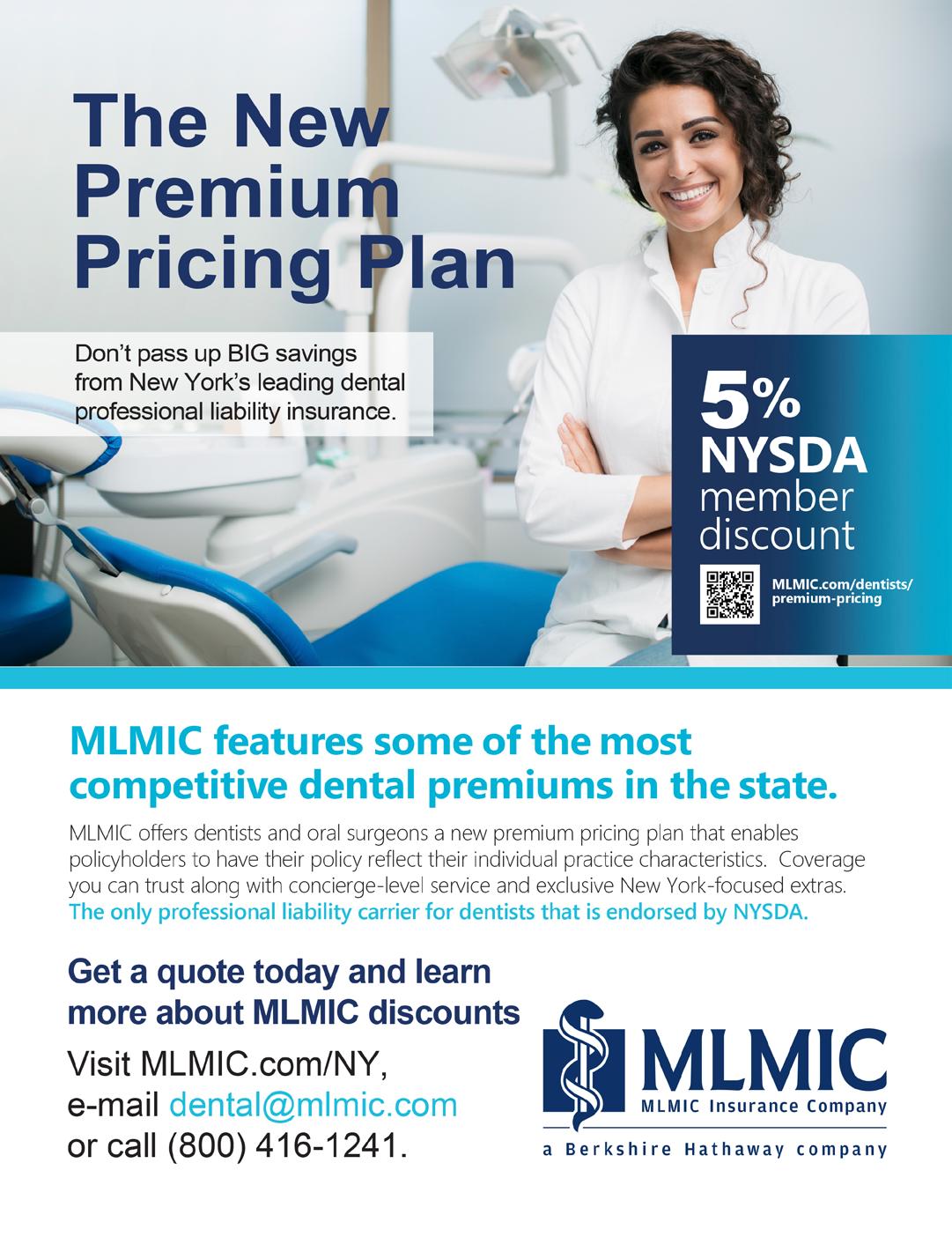
Charting Success
Strategies to Build and Maintain a Stellar Online Reputation
Ashli Klingaman
First impressions have the power to make or break the way patients perceive dental practices. Often, practice owners will spend the time and money required to create welcoming lobbies and world-class facilities while dedicating themselves to hiring and training staff members who provide exceptional patient care. However, as important as all of that is, a new patient’s first impression is typically going to come from a practice’s online reputation.
As with most things today, patients rely on the internet when it comes to research. And choosing a dentist is no different, as potential patients turn to online reviews to learn about a practice and what other patients have had to say about their experiences there. In fact, according to a study by RepuGen, 81% of patients use online reviews to select a healthcare provider.

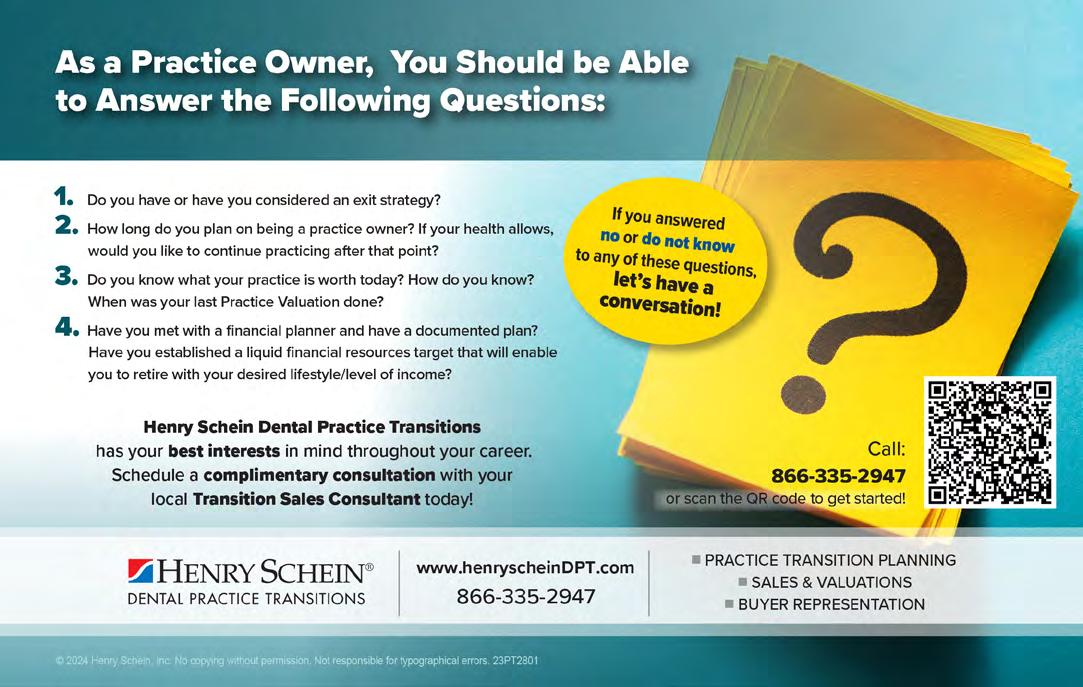
NEWS 4
CONTINUED ON PAGE 11 1

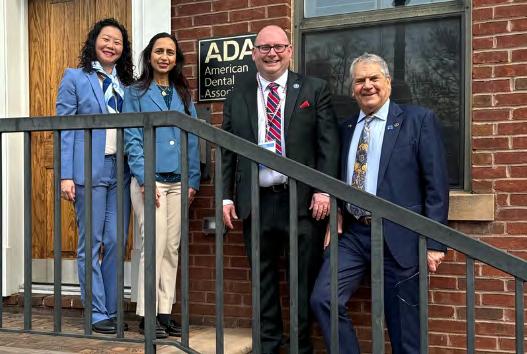
Setting out for The Hill from ADA headquarters in Washington, D.C., are, from left, New York County President-Elect Vera Tang, NYSDA President-Elect Prabha Krishnan, NYSDA Executive Director Greg Hill, NYS Dental Foundation Secretary Robert Peskin, Nassau County.
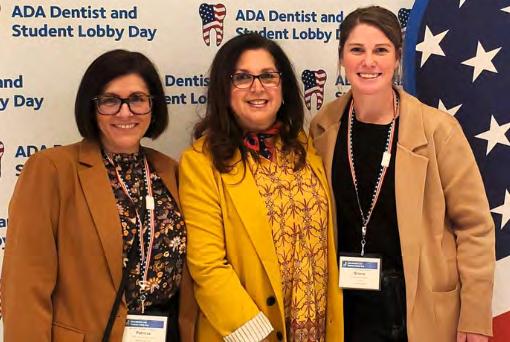
Dental advocates include, from
NYSDA Goes to Washington
WHEN THE ADA CALLED for participants for its annual Dentist and Student Lobby Day, more than 1,200 people responded. It was the largest attendance in the event’s seven-year history. Among those who answered the call to assemble in Washington, D.C., April 7-9 was a delegation of dentists and dental students representing NYSDA. They came prepared to advocate for dentistry, speaking with lawmakers about issues such as student loan reform, dental benefit fees and workforce challenges. z
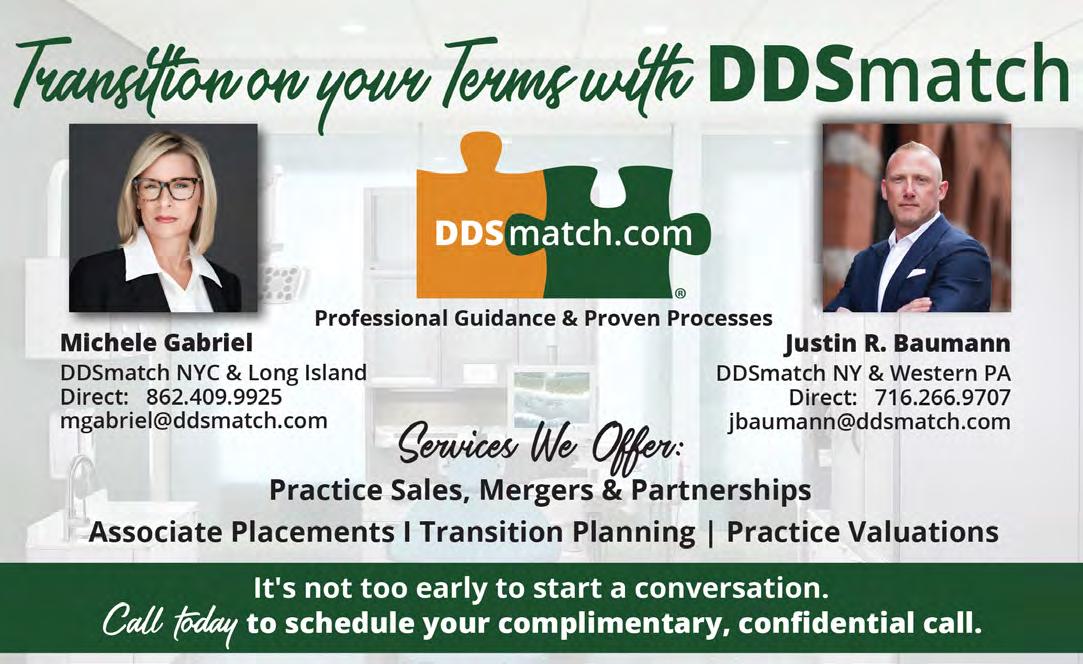
NEWS 6
left: Patty Marcucia, assistant to Executive Office, NYSDA; NYS Dental Foundation Chair Maria Maranga; Briana McNamee, NYSDA Director Governmental Affairs.
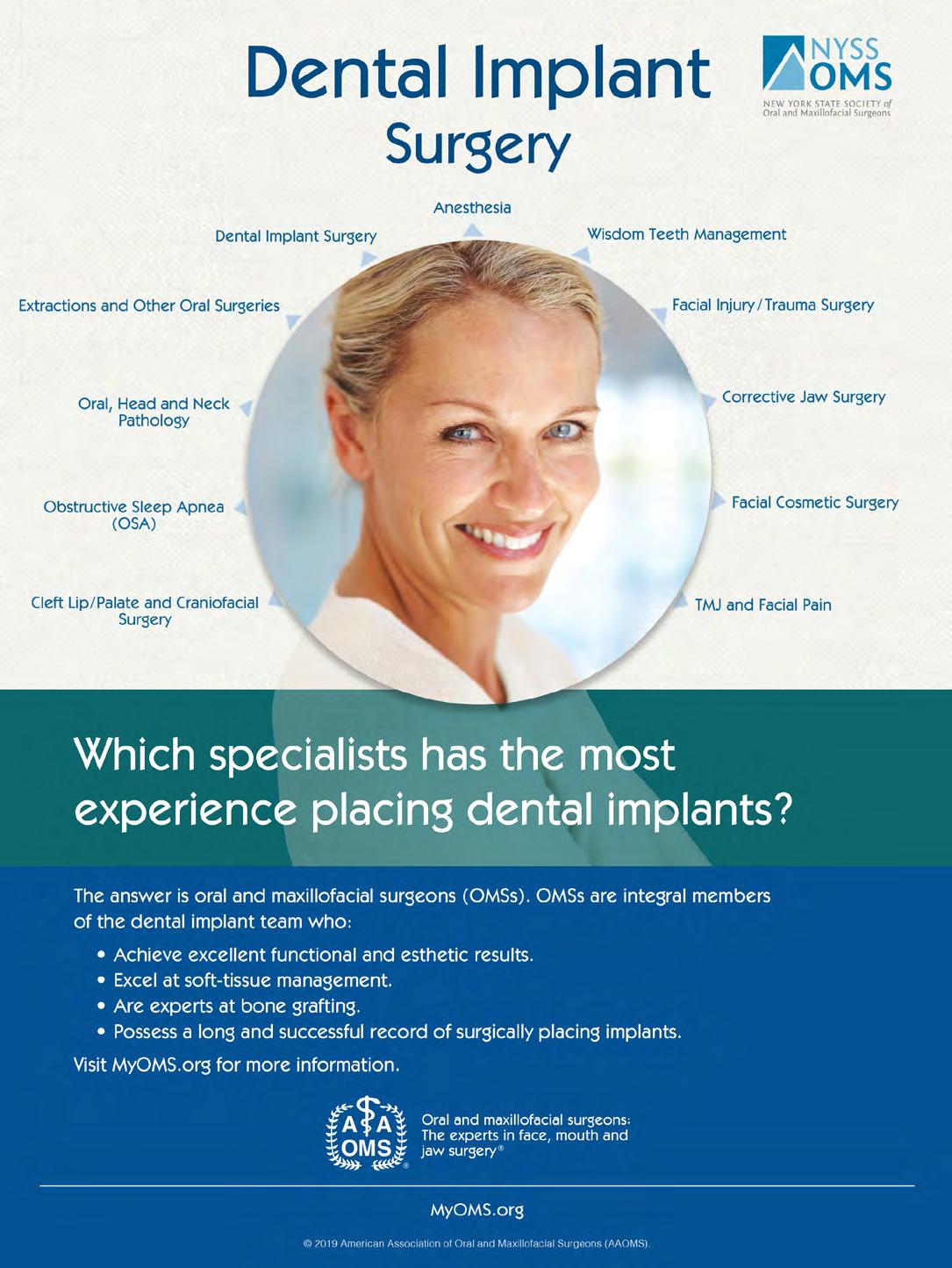
Scott Firestone and Frank Barnashuk to be Honored at Annual Meeting
Scott Firestone, D.D.S., of Smithtown, Suffolk County, who has made a career of volunteering his time and professional services for the betterment of his fellow professionals and the public at large, will be recognized at the NYSDA House of Delegates Meeting. Dr. Firestone will receive the Jarvie-Burkhart Award, highest honor bestowed by NYSDA, during the opening session of the House on May 31. He is being recognized for “outstanding service rendered to humankind through dentistry.”
Also being recognized at the meeting is Frank Barnashuk, D.D.S., of Buffalo. Dr. Barnashuk is slated to receive the Dr. Mark J. Feldman Distinguished Service Award for “outstanding service and commitment to the New York State Dental Association. “
Dr. Firestone’s outreach efforts have included instructing dental school students and general practice residents in both academic and hospital settings; providing free care to patients referred by Donated Dental Services (Dental Lifeline Network); volunteering in over 25 missions, including state missions of mercy and Remote Area Medical Outreach Missions along the East Coast; and providing monthly dental care to adults with physical and emotional handicaps under general anesthesia at St. Charles Hospital in Port Jefferson, Long Island.

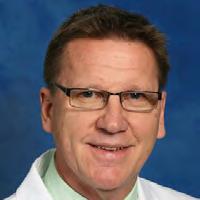
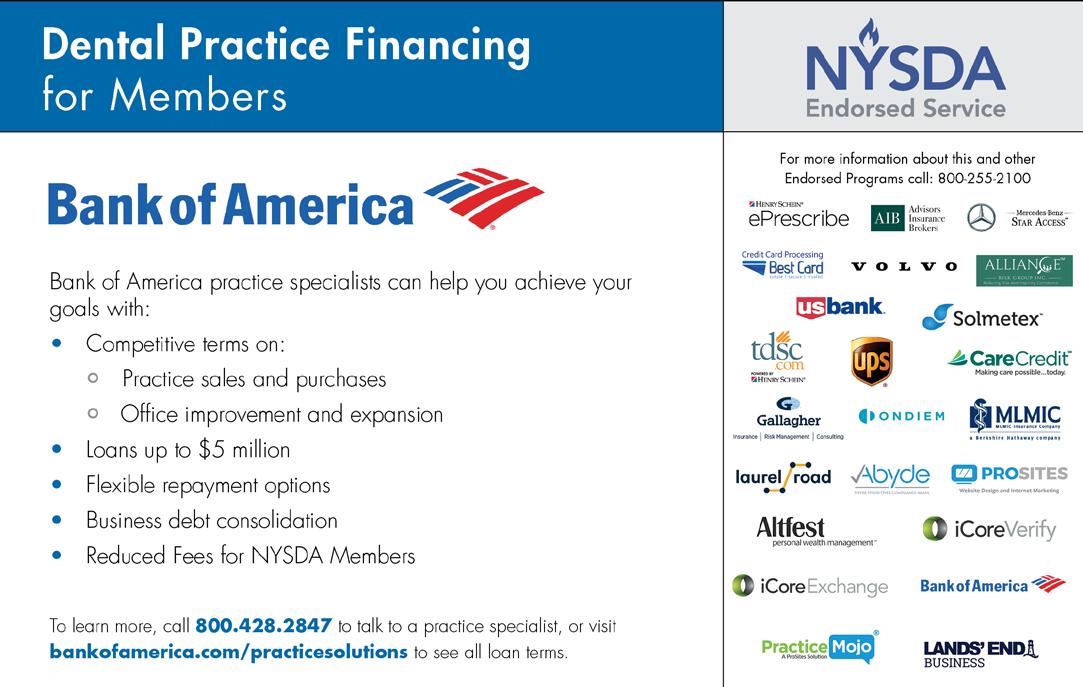
NEWS 8
CONTINUED ON PAGE 14 1
Dr. Frank Barnashuk
Dr. Scott Firestone
Payments in the Practice
What Trends are Affecting Your Bottom Line?
Phil Nieto
DENTISTRY CAN BE an isolated profession, and it’s often difficult to know how your practice compares to those of your peers. While no two practices are identical, how would you know if the trends in your office are being seen by other dental practices? There are some questions that can be embarrassing to ask another practitioner about: practice volume, profitability, etc. The landscape of the payments your practice accepts has probably changed drastically in the last few years, but those changes often can slip under the radar even when it is significantly affecting your bottom line.
Best Card, the endorsed payment processor of NYSDA and ADA Member Advantage, has been working with thousands of dental offices nationwide for over 15 years, and we want to pull back the curtain on the uncomfortable questions you may not want to ask your fellow practitioners, such as:
• How much does the average dental office collect in credit card payments?
• Have dentists raised their prices to keep up with inflation?
• What are other dentists paying to accept credit card payments?
• How much should you be paying?
Using our data from thousands of dental offices, here’s a little peek into what the average dental practice has experienced.
How much does the average dental office collect in credit cards?
Dental offices have seen a large increase in the total amount of credit card payments collected over the past 10-plus years, and COVID accelerated that trend considerably, as patients moved towards payment methods that were more convenient and involved less physical contact.
Furthermore, many insurance providers started issuing virtual credit cards as payment for their remittances, which also increased the amount of card payments dental practices are accepting.
In 2023, the average dental office ran $44,925 in credit card payments per month. That’s a 45.5% increase over the 2019 average of $30,876. It’s a 195% increase over the 2009 average of $15,221. And the average practice is now running almost three-times as much in credit cards as in 2009.
While accepting credit cards ensures that offices can quickly and easily collect payments, with more patients and insurance providers choosing to pay with cards, it is a much more substantial factor in the practice’s total profitability than in the past.
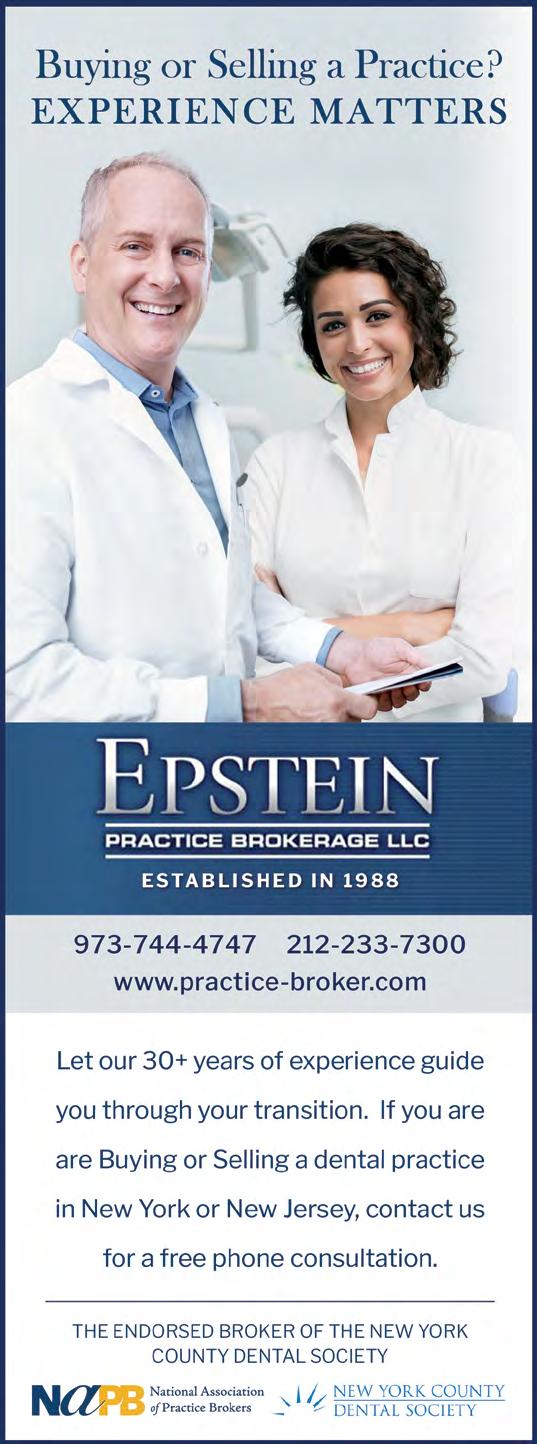
NEWS 9
CONTINUED ON PAGE 15 1
Prabha Krishnan Heads Slate of Officers
continued from page 1 -
Dr. Edwards holds faculty positions in the Department of Oral and Maxillofacial Surgery at NYU College of Dentistry and at Mount Sinai and Mount Sinai West Medical Center’s Oral and Maxillofacial Surgery Sections in the Department of Otolaryngology. Dr. Edwards is recipient of the NYSDA New Dentist Leadership Award, presented to honor his time spent with the Dental ID Unit at the Office of the Chief Medical Examiner of New York City searching for and identifying the remains of victims of the Sept. 11 terrorist attack.
Amarilis Jacobo
Amarilis Jacobo, D.D.S., a native of the Dominican Republican and graduate of La Universidad Central del Este School of Dentistry and NYU School of Dentistry, treats patients at her offices in Harlem and in the Bronx. Active in organized dentistry for the last 30 years, Dr. Jacobo has held many leadership positions with Bronx County Dental Society, been a delegate or alternate delegate to the NYSDA and ADA houses, served on the NYSDA Council on Ethics, Empire Dental Political Action Committee and Committee on Dental Medicaid, and sits on the NYSDA Board of Trustees.
Dr. Jacobo is a founder of the Dominican Dental Association, a past president of the National Hispanic Dental Association, and currently cochairs the Pierre Fauchard Academy, New York State Section. She is a graduate of the ADA Institute for Diversity in Leadership. In 2016, she established a scholarship award to be given to students in the Bronx, and in 2017, she opened a free dental clinic in the Dominican Republic, which she named after her father.
Paul Leary
Paul Leary, D.M.D., entered the Navy while in his first year at Temple University School of Dentistry. He completed three years of active-duty service upon graduation before entering private practice in Smithtown, Suffolk County. He remained in the Naval Reserve for 14 years and practiced dentistry for 35 years.
A leader at all three levels of organized dentistry, Dr. Leary served most recently as ADA Trustee from the Second District, New York State. He previously chaired the ADA Compensation Committee and the Commission for Continuing Education Program Review and CE Accreditation. He has been a delegate or alternate delegate to the ADA House since 2004, is a member of the Pierre Fauchard Academy, the American and International College of Dentists and is a former member of the Military Board of Surgeons. At the local level, Dr. Leary is one of several Suffolk County members who for the past 13 years have presented an ethics course to fourth-year students at Stony Brook School of Dental Medicine.
William Karp
William Karp, D.D.S., is a general practice dentist who has maintained his private practice in the Syracuse area since 1983. He is also an attending at St. Joseph’s Hospital and Health Center, where he helps to educate dental residents.
Active at all levels of organized dentistry, Dr. Karp is a past president of the Fifth District Dental Society, as well as its parliamentarian since 2009. He has been a delegate to the ADA House and a member of the ADA Council on Communications, both a NYSDA Governor and Trustee and delegate to the NYSDA Houses. z
NEWS 10
1
Charting Success
continued from page 4 -
In an era where potential patients will be reading reviews and investigating your online reputation before they ever even come through the door, reputation management has become imperative to a practice’s continued success. Our goal here is to look at the strategic impact of attracting positive reviews, handling negative ones, and addressing other common challenges associated with online interactions with patients and potential patients.
Building Positive Online Reputation through Patient Reviews
The foundation of a practice’s success rests not only on clinical expertise but also on the perceptions and experiences of patients. Beyond routine dental procedures, the key to earning positive online reviews lies in providing a positive patient experience and encouraging those patients to spread the word about the good work you do with others online.
A recent study (Whitespark) found that reviews are the second highest ranking factor when trying to appear in Google’s 3-Pack or Local Map Pack. Increasing the number of positive reviews will rank you higher in local searches, which helps your practice attract new patients. Further, a study by BrightLocal found that businesses with a 5-star rating on Google get 25% more clicks from the search results page than businesses with a 3-star rating.
Patient testimonials are an effective way to attract a larger pool of patients. When showcasing the positive reviews you’ve garnered on either your website or social platforms, it is best to use reviews that highlight the unique strengths of your practice or specific services that you would like to generate appointments for.
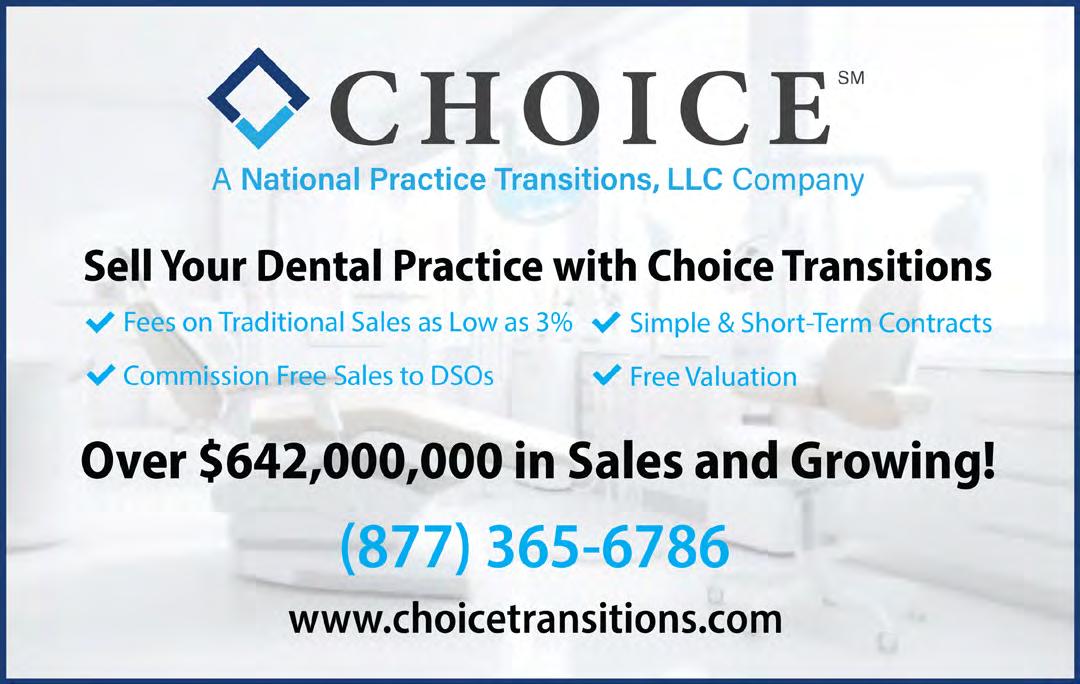
NEWS 11
CONTINUED ON PAGE 12 1
Charting Success
continued from page 11 -
Leveraging a communication tool that directly syncs back to the practice management system like PracticeMojo or ProSites Reviews, opens the door for an automatic review collection strategy. Review campaigns can be triggered immediately after a patient’s appointment, creating more opportunities to consistently gain positive reviews. Linking to review platforms like Google, Facebook and Yelp makes leaving reviews easier for the patient, increasing the likelihood of them leaving a review.
Composing thoughtful responses
to
positive or negative reviews that are generic but reflect the voice of your practice can save time and make responding to reviews more efficient.
What Responding to Online Reviews Says About Your Practice
Responding to online reviews can shape the narrative of your dental practice. Monitoring online reviews is the first step, and utilizing tools such as ProSites Reviews to monitor multiple review platforms helps staff track feedback. Composing thoughtful responses to positive or negative reviews that are generic but reflect the voice of your practice can save time and make responding to reviews more efficient.
Responding to reviews is a chance to show your dedication to patient satisfaction and enhances your ability to control your online reputation. Additionally, proactively responding to reviews helps improve your SEO (search engine optimization), so that your listing appears more frequently (and higher up) in search results. Google has confirmed that review response rate is a significant factor in how they rank businesses in Google search results.

Negative Reviews Can be Source of Valuable Feedback
Crafting the right response to negative reviews requires a balance of acknowledging patient concerns and showing your commitment to continuous improvement. In a study by ReviewTrackers, more than half (53%) of consumers expected a response to a negative review within a week of the original posting, signaling that not responding can have a greater negative impact than addressing one. Using client feedback as constructive criticism and finding areas of improvement shows existing and prospective patients you care about what they have to say.
Recognizing that no practice is immune to occasional setbacks, negative reviews provide your practice with an opportunity to demonstrate to patients that you value transparency and are willing to learn from patient experiences.
Addressing Common Challenges When Managing Your Reputation Online
Anonymous online reviews often create challenges, such as fake reviews. For whatever reason, someone
NEWS 12 CONTINUED ON PAGE 13 1
Charting Success
continued from page 12 -
may share misinformation intended to negatively impact a practice’s credibility. There are two ways to address a suspicious review. First, like credible negative reviews, it is always best to respond directly to suspicious ones rather than ignoring them. Alternatively, if a fake is obvious, most online review platforms have a reporting process to dispute suspicious reviews if you have reason to doubt their veracity.
Another common challenge with reputation management comes with the complexities surrounding the protection of patient privacy. As your practice focuses on transparency, patient confidentiality must remain safeguarded from public eyes. A practice can be fined for responding to online reviews with patient information, such as name, insurance information, treatment plan or cost information. Fines may also apply if your response merely confirms that the patient visited your practice.
To protect your practice from litigation, responses to both negative and positive reviews should use generalities. Fines or settlements for civil HIPAA violations can range anywhere from $137 to $68,928 per violation, depending on the level of liability (The HIPAA Journal). Respond with polite phrases like, “We take your feedback seriously,” or “We strive to always improve our patient experience.” Even general responses such as a simple “Thank you” show appreciation and a commitment to improving the patient experience.
To address these common challenges efficiently, reputation management tools like ProSites Reviews allow your staff to be notified of new reviews and to reply to reviews with pre-written responses, saving your staff time from tedious tasks and mitigating the risk of violating HIPAA compliance.
Implement Reputation Management Strategies into Staff Training
Each staff member plays a role in shaping a patient’s experience with your practice and should understand the impact they can have when it comes to garnering positive reviews. Train the entire staff to be mindful of the important role they play when it comes to leaving a good impression on patients from the moment the patient walks through the door. From reception to treatment rooms, ensure staff members are consistently communicating the practice’s values to the patients, making them more likely to share their experiences with others through online reviews.
Reputation management reaches beyond the basics of patient interactions; it transforms every staff member into a steward of the practice’s online reputation. The ability to generate more positive reviews will position you as the trusted dental professional in your community and make your practice stand out from the competition to potential patients.
Connecting with Patients Through Your Online Reputation Builds Trust
Online reputation management can shape the course of success for every practice and reflect your commitment to providing excellent patient care in your community. By nurturing patient experiences, responding thoughtfully to feedback and leveraging the power of positive reviews, you are in control of what your online presence and reputation look like to any patient looking for dental care. z

ProSites, a NYSDA-endorsed vendor for dental marketing solutions and website design, provides comprehensive marketing services, including reputation management, to help practices thrive by growing their online presence and maintaining a steady flow of new patients. To learn more and claim exclusive NYSDA discounts, visit ProSites.com/NYSDA. Ashli Klingaman is content marketing manager for ProSites. She arrived at her position with experience in sales, training management, human resources, and marketing within the retail and Software as a Service industry. At ProSites, she consistently seeks innovative ways to bridge the gap between human capital development and business success.
NEWS 13
1
Scott Firestone and Frank Barnashuk continued from page 8 -
A fellow of the American Academy of Forensic Sciences, Dr. Firestone provided his services to the Suffolk County Medical Examiners Dental Identification Team to help identify victims of TWA Flight 800 disaster in 1996, and he was a vital part of FEMA’s Disaster Mortuary Operations Team, leaving his practice and home for extended periods to help identify the victims of Hurricane Katrina and the World Trade Center Terrorist Attack.
Distinguished Service
Dr. Barnashuk has provided leadership over a long and distinguished career in organized dentistry, including as president of the Eighth District Dental Society and NYSDA Secretary-Treasurer from 2017-2023. During his term as the Association’s financial officer, the world was in the throes of a pandemic. While many companies went out of business, Dr. Barnashuk provided the expertise to keep NYSDA financially sound.
Dr. Barnashuk’s commitment to organized dentistry is further evidenced in his role as program director and clinical assistant professor at the University at Buffalo School of Dental Medicine, where he has helped mold future dentists, encouraging students to be part of the Eighth District, NYSDA and the ADA. He is active in ADPAC and EDPAC and has sat on multiple councils and committees, including the Council on Dental Education and Licensure. z
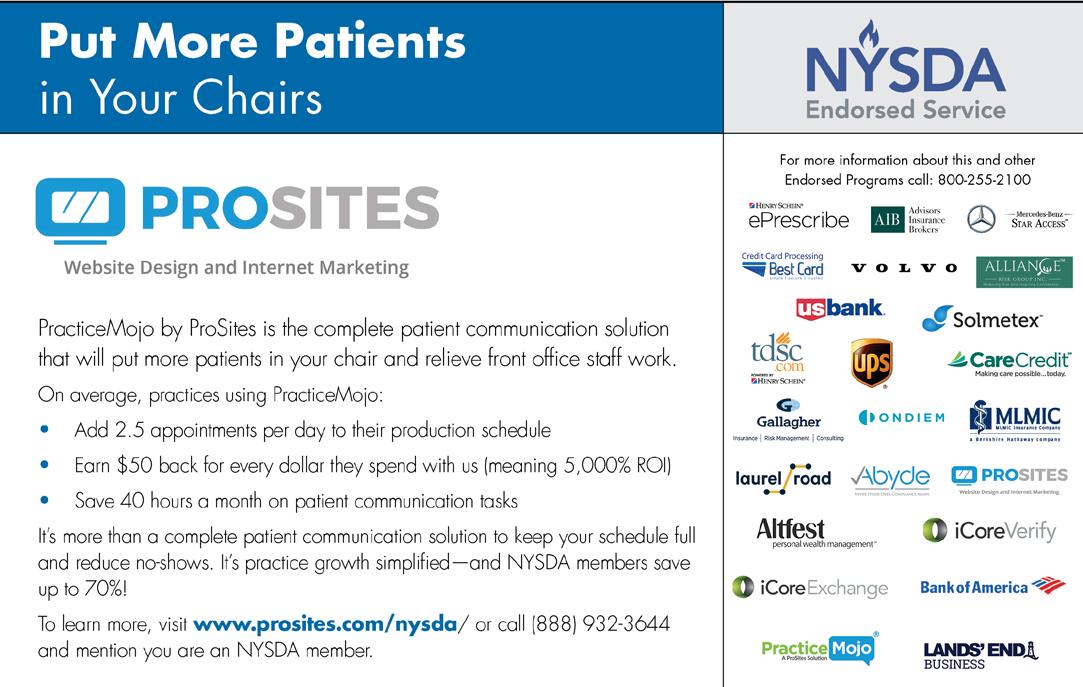
NEWS 14
1
Payments in the Practice
continued from page 9 -
Have practices raised their costs to keep up with inflation?
Every dentist knows that COVID and the resulting supply chain and inflation issues increased the costs of items used regularly in the practice. As a result, many dentists have had to raise their prices over the last several years in response to those increased business costs. We can see this trend clearly by looking at the size of the average payment across all practices.
• The average credit card payment accepted by dental offices in 2023 was $306, compared to $273 in 2019— an increase of 11.87% in just four years.
• From 2009 to 2019, the average payment only increased 0.12% over a 10-year period.
• 2023 saw a slight decrease in the average payment compared to 2022, from $307 to $306, indicating that increases due to inflation may be slowing.
The Consumer Price Index shows that inflation in the U.S. from 2019 to 2023 was 19.2%, so even though the increase in average dental transaction size from 2019 onward marked a substantial difference compared to 20092019, the 11.87% increase hasn’t kept up with the economy-wide price hike.
What does the average practice pay to run cards?
At the same time that the average dental office’s payment volume has increased, the costs incurred to run those payments have also increased, and often these fees can be hard to understand. What’s easy to discern, however, is the impact on the bottom line of the practice—to figure this out, you should calculate your effective rate with some simple math:
Total Fees Paid for the month ÷ Total Run in Card Sales during the month = Your Effective Rate
In 2023, the average dental office in the U.S. paid 3.53%, compared to 3.06% in 2019. These rates are already too high, but to put it in perspective, back in 2014, the average dental office paid 2.84%.
So, the average practice is paying more as a percentage per payment while also accepting 45% more card payments than they did back before the pandemic. That makes a big difference.
Put in real numbers:
• The average office in 2019 ran $30,876 at a rate of 3.06% for a total of $944 per month in fees.
• The average office in 2023 ran $45k in card payments, and is now paying 3.45%, for a total of $1,585 per month in fees.
• For the average practice, that’s an increase of $7,692 per year in costs over just four years.
While the average office paid more than 3.53% in 2023, Best Card’s average dental office on the exclusive rates offered to NYSDA members paid 2.22% in 2023, for an average savings of $6,496 per year.
Summary
Dental practice owners are busy and sometimes it is easy to overlook small increases in the costs of services you are using. But often those small increases are frequent enough to have a big impact. Any part of your business that increases substantially over time should be analyzed periodically to make sure that it’s meeting the needs of your bottom line.
If you see that you’re paying more to accept credit cards while also taking more payments, it might be time to look for a better option. z

Phil Nieto is president of Best Card, the endorsed credit card processor of NYSDA and ADA Member Advantage. To find out what Best Card might be able to save your practice, send them a recent monthly statement and they will do a complimentary cost analysis to show you exactly what your practice could be saving. Phone: (877) 739-3952; Email: Compare@bestcardteam.com; Fax: (866) 717-7247.
NEWS 15
1
























